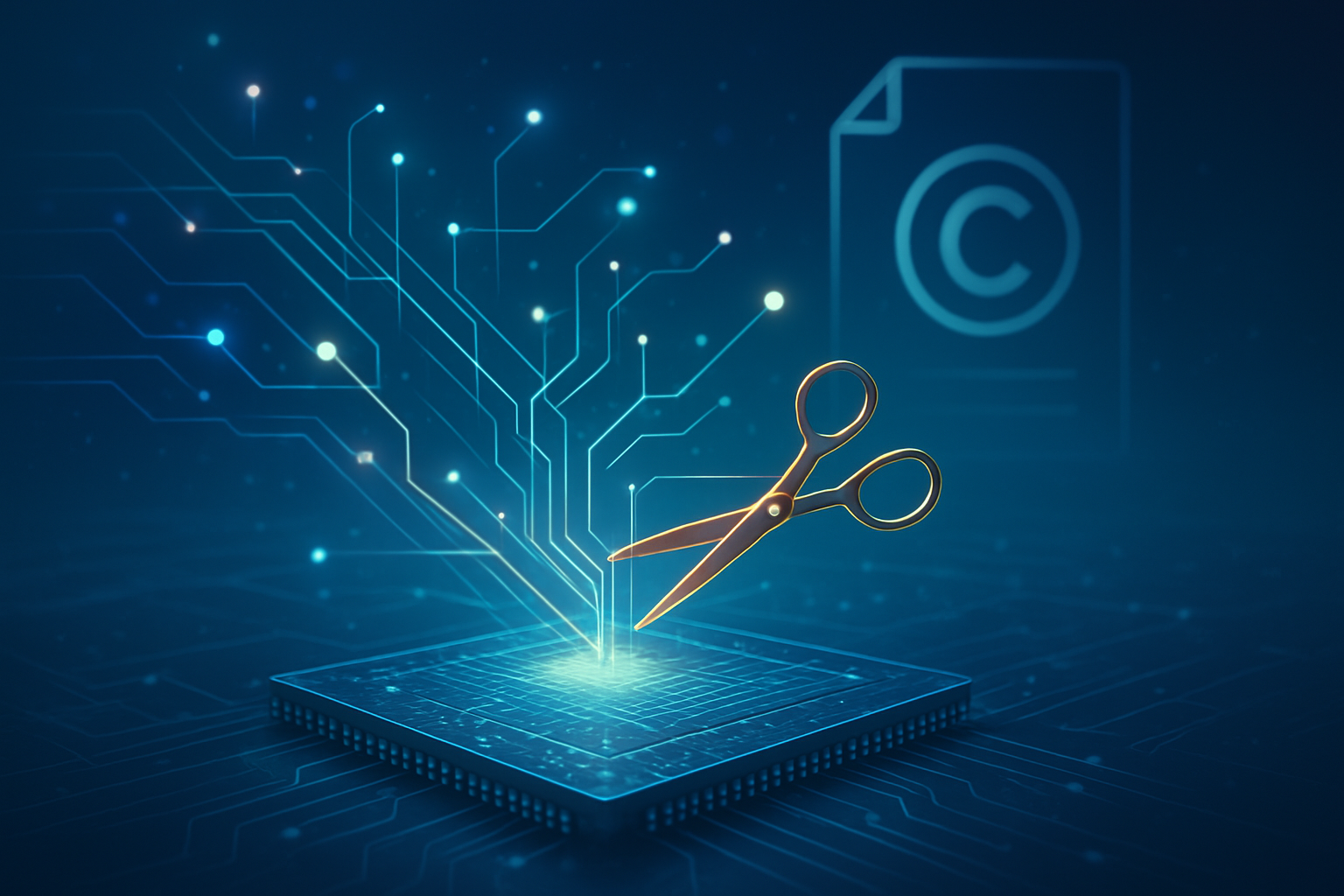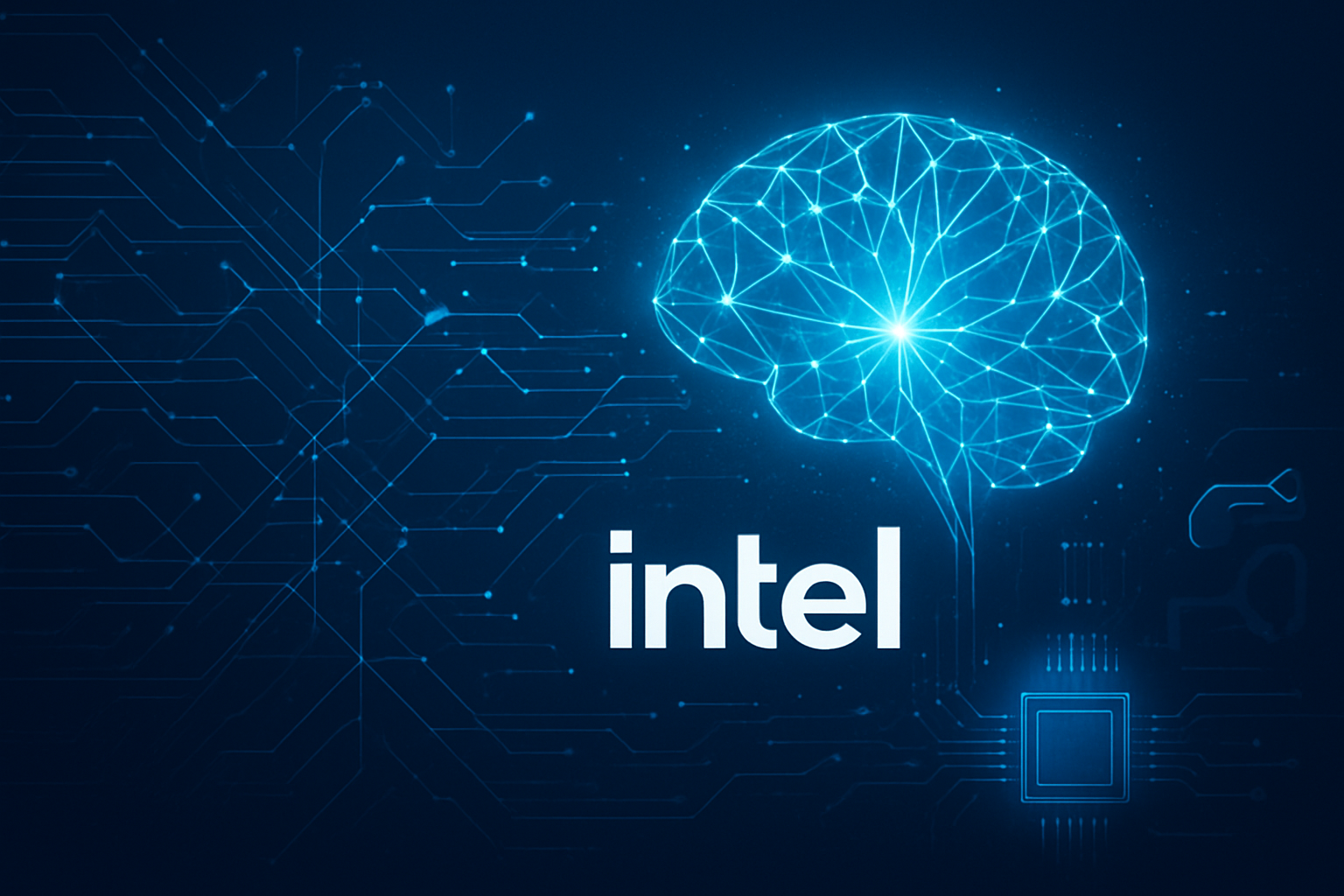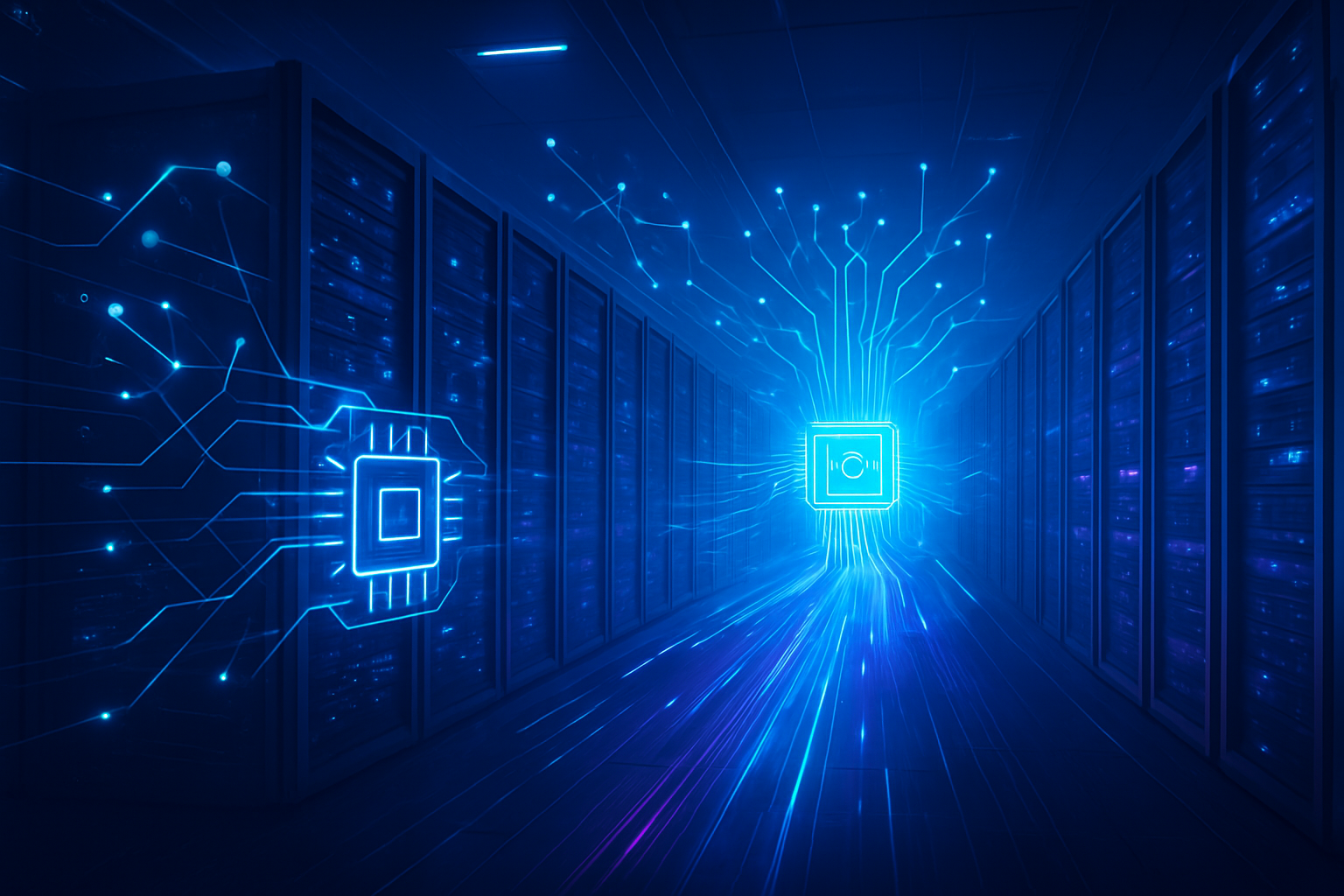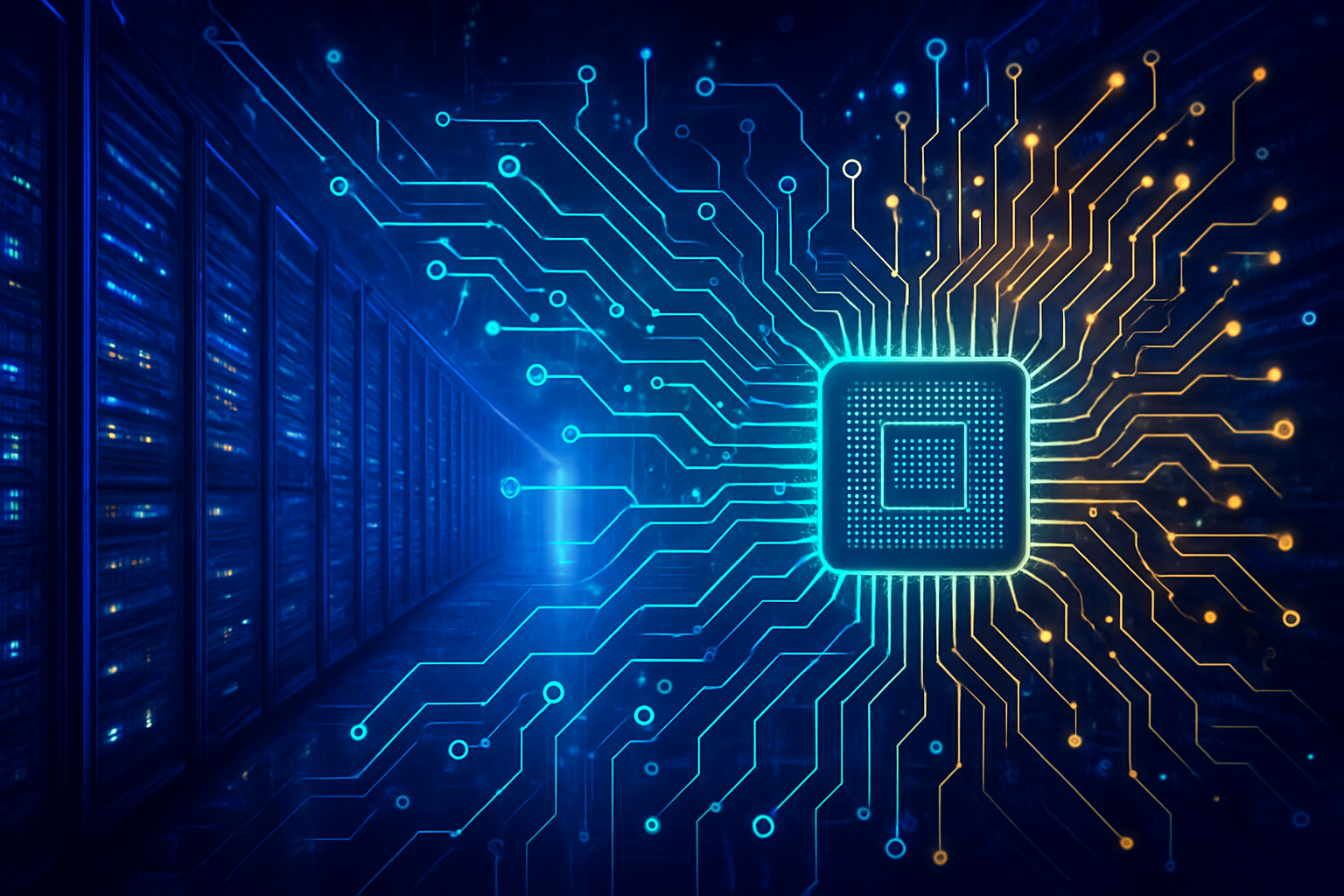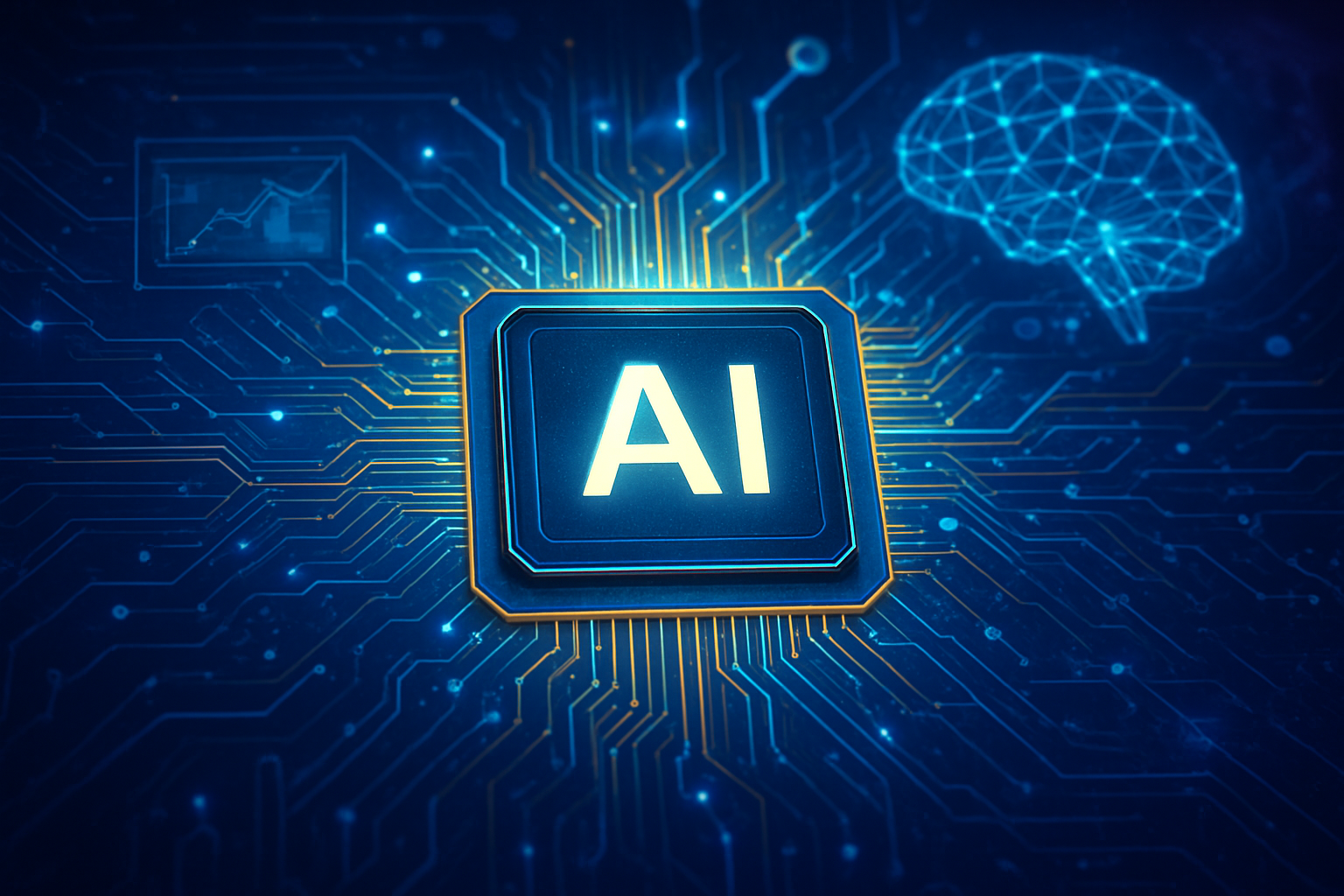The landscape of autonomous vehicle (AV) technology is undergoing a profound transformation with the rapid emergence of brain-like computer chips. These neuromorphic processors, designed to mimic the human brain's neural networks, are poised to redefine the efficiency, responsiveness, and adaptability of self-driving cars. As of late 2025, this once-futuristic concept has transitioned from theoretical research into tangible products and pilot deployments, signaling a pivotal moment for the future of autonomous transportation.
This groundbreaking shift promises to address some of the most critical limitations of current AV systems, primarily their immense power consumption and latency in processing vast amounts of real-time data. By enabling vehicles to "think" more like biological brains, these chips offer a pathway to safer, more reliable, and significantly more energy-efficient autonomous operations, paving the way for a new generation of intelligent vehicles on our roads.
The Dawn of Event-Driven Intelligence: Technical Deep Dive into Neuromorphic Processors
The core of this revolution lies in neuromorphic computing's fundamental departure from traditional Von Neumann architectures. Unlike conventional processors that sequentially execute instructions and move data between a CPU and memory, neuromorphic chips employ event-driven processing, often utilizing spiking neural networks (SNNs). This means they only process information when a "spike" or change in data occurs, mimicking how biological neurons fire.
This event-based paradigm unlocks several critical technical advantages. Firstly, it delivers superior energy efficiency; where current AV compute systems can draw hundreds of watts, neuromorphic processors can operate at sub-watt or even microwatt levels, potentially reducing energy consumption for data processing by up to 90%. This drastic reduction is crucial for extending the range of electric autonomous vehicles. Secondly, neuromorphic chips offer enhanced real-time processing and responsiveness. In dynamic driving scenarios where milliseconds can mean the difference between safety and collision, these chips, especially when paired with event-based cameras, can detect and react to sudden changes in microseconds, a significant improvement over the tens of milliseconds typical for GPU-based systems. Thirdly, they excel at efficient data handling. Autonomous vehicles generate terabytes of sensor data daily; neuromorphic processors process only motion or new objects, drastically cutting down the volume of data that needs to be transmitted and analyzed. Finally, these brain-like chips facilitate on-chip learning and adaptability, allowing AVs to learn from new driving scenarios, diverse weather conditions, and driver behaviors directly on the device, reducing reliance on constant cloud retraining.
Initial reactions from the AI research community and industry experts are overwhelmingly positive, highlighting the technology's potential to complement and enhance existing AI stacks rather than entirely replace them. Companies like Intel Corporation (NASDAQ: INTC) have made significant strides, unveiling Hala Point in April 2025, the world's largest neuromorphic system built from 1,152 Loihi 2 chips, capable of simulating 1.15 billion neurons with remarkable energy efficiency. IBM Corporation (NYSE: IBM) continues its pioneering work with TrueNorth, focusing on ultra-low-power sensory processing. Startups such as BrainChip Holdings Ltd. (ASX: BRN), SynSense, and Innatera have also begun commercializing their neuromorphic solutions, demonstrating practical applications in edge AI and vision tasks. This innovative approach is seen as a crucial step towards achieving Level 5 full autonomy, where vehicles can operate safely and efficiently in any condition.
Reshaping the Automotive AI Landscape: Corporate Impacts and Competitive Edge
The advent of brain-like computer chips is poised to significantly reshape the competitive landscape for AI companies, tech giants, and startups deeply entrenched in the autonomous vehicle sector. Companies that successfully integrate neuromorphic computing into their platforms stand to gain substantial strategic advantages, particularly in areas of power efficiency, real-time decision-making, and sensor integration.
Major semiconductor manufacturers like Intel Corporation (NASDAQ: INTC), with its Loihi series and the recently unveiled Hala Point, and IBM Corporation (NYSE: IBM), a pioneer with TrueNorth, are leading the charge in developing the foundational hardware. Their continued investment and breakthroughs position them as critical enablers for the broader AV industry. NVIDIA Corporation (NASDAQ: NVDA), while primarily known for its powerful GPUs, is also integrating AI capabilities that simulate brain-like processing into platforms like Drive Thor, expected in cars by 2025. This indicates a convergence where even traditional GPU powerhouses are recognizing the need for more efficient, brain-inspired architectures. Qualcomm Incorporated (NASDAQ: QCOM) and Samsung Electronics Co., Ltd. (KRX: 005930) are likewise integrating advanced AI and neuromorphic elements into their automotive-grade processors, ensuring their continued relevance in a rapidly evolving market.
For startups like BrainChip Holdings Ltd. (ASX: BRN), SynSense, and Innatera, specializing in neuromorphic solutions, this development represents a significant market opportunity. Their focused expertise allows them to deliver highly optimized, ultra-low-power chips for specific edge AI tasks, potentially disrupting segments currently dominated by more generalized processors. Partnerships, such as that between Prophesee (a leader in event-based vision sensors) and automotive giants like Sony, Bosch, and Renault, highlight the collaborative nature of this technological shift. The ability of neuromorphic chips to reduce power draw by up to 90% and shrink latency to microseconds will enable fleets of autonomous vehicles to function as highly adaptive networks, leading to more robust and responsive systems. This could significantly impact the operational costs and performance benchmarks for companies developing robotaxis, autonomous trucking, and last-mile delivery solutions, potentially giving early adopters a strong competitive edge.
Beyond the Wheel: Wider Significance and the Broader AI Landscape
The integration of brain-like computer chips into self-driving technology extends far beyond the automotive industry, signaling a profound shift in the broader artificial intelligence landscape. This development aligns perfectly with the growing trend towards edge AI, where processing moves closer to the data source, reducing latency and bandwidth requirements. Neuromorphic computing's inherent efficiency and ability to learn on-chip make it an ideal candidate for a vast array of edge applications, from smart sensors and IoT devices to robotics and industrial automation.
The impact on society could be transformative. More efficient and reliable autonomous vehicles promise to enhance road safety by reducing human error, improve traffic flow, and offer greater mobility options, particularly for the elderly and those with disabilities. Environmentally, the drastic reduction in power consumption for AI processing within vehicles contributes to the overall sustainability goals of the electric vehicle revolution. However, potential concerns also exist. The increasing autonomy and on-chip learning capabilities raise questions about algorithmic transparency, accountability in accident scenarios, and the ethical implications of machines making real-time, life-or-death decisions. Robust regulatory frameworks and clear ethical guidelines will be crucial as this technology matures.
Comparing this to previous AI milestones, the development of neuromorphic chips for self-driving cars stands as a significant leap forward, akin to the breakthroughs seen with deep learning in image recognition or large language models in natural language processing. While those advancements focused on achieving unprecedented accuracy in complex tasks, neuromorphic computing tackles the fundamental challenges of efficiency, real-time adaptability, and energy consumption, which are critical for deploying AI in real-world, safety-critical applications. This shift represents a move towards more biologically inspired AI, paving the way for truly intelligent and autonomous systems that can operate effectively and sustainably in dynamic environments. The market projections, with some analysts forecasting the neuromorphic chip market to reach over $8 billion by 2030, underscore the immense confidence in its transformative potential.
The Road Ahead: Future Developments and Expert Predictions
The journey for brain-like computer chips in self-driving technology is just beginning, with a plethora of expected near-term and long-term developments on the horizon. In the immediate future, we can anticipate further optimization of neuromorphic architectures, focusing on increasing the number of simulated neurons and synapses while maintaining or even decreasing power consumption. The integration of these chips with advanced sensor technologies, particularly event-based cameras from companies like Prophesee, will become more seamless, creating highly responsive perception systems. We will also see more commercial deployments in specialized autonomous applications, such as industrial vehicles, logistics, and controlled environments, before widespread adoption in passenger cars.
Looking further ahead, the potential applications and use cases are vast. Neuromorphic chips are expected to enable truly adaptive Level 5 autonomous vehicles that can navigate unforeseen circumstances and learn from unique driving experiences without constant human intervention or cloud updates. Beyond self-driving, this technology will likely power advanced robotics, smart prosthetics, and even next-generation AI for space exploration, where power efficiency and on-device learning are paramount. Challenges that need to be addressed include the development of more sophisticated programming models and software tools for neuromorphic hardware, standardization across different chip architectures, and robust validation and verification methods to ensure safety and reliability in critical applications.
Experts predict a continued acceleration in research and commercialization. Many believe that neuromorphic computing will not entirely replace traditional processors but rather serve as a powerful co-processor, handling specific tasks that demand ultra-low power and real-time responsiveness. The collaboration between academia, startups, and established tech giants will be key to overcoming current hurdles. As evidenced by partnerships like Mercedes-Benz's research cooperation with the University of Waterloo, the automotive industry is actively investing in this future. The consensus is that brain-like chips will play an indispensable role in making autonomous vehicles not just possible, but truly practical, efficient, and ubiquitous in the decades to come.
Conclusion: A New Era of Intelligent Mobility
The advancements in self-driving technology, particularly through the integration of brain-like computer chips, mark a monumental step forward in the quest for fully autonomous vehicles. The key takeaways from this development are clear: neuromorphic computing offers unparalleled energy efficiency, real-time responsiveness, and on-chip learning capabilities that directly address the most pressing challenges facing current autonomous systems. This shift towards more biologically inspired AI is not merely an incremental improvement but a fundamental re-imagining of how autonomous vehicles perceive, process, and react to the world around them.
The significance of this development in AI history cannot be overstated. It represents a move beyond brute-force computation towards more elegant, efficient, and adaptive intelligence, drawing inspiration from the ultimate biological computer—the human brain. The long-term impact will likely manifest in safer roads, reduced environmental footprint from transportation, and entirely new paradigms of mobility and logistics. As major players like Intel Corporation (NASDAQ: INTC), IBM Corporation (NYSE: IBM), and NVIDIA Corporation (NASDAQ: NVDA), alongside innovative startups, continue to push the boundaries of this technology, the promise of truly intelligent and autonomous transportation moves ever closer to reality.
In the coming weeks and months, industry watchers should pay close attention to further commercial product launches from neuromorphic startups, new strategic partnerships between chip manufacturers and automotive OEMs, and breakthroughs in software development kits that make this complex hardware more accessible to AI developers. The race for efficient and intelligent autonomy is intensifying, and brain-like computer chips are undoubtedly at the forefront of this exciting new era.
This content is intended for informational purposes only and represents analysis of current AI developments.
TokenRing AI delivers enterprise-grade solutions for multi-agent AI workflow orchestration, AI-powered development tools, and seamless remote collaboration platforms.
For more information, visit https://www.tokenring.ai/.



